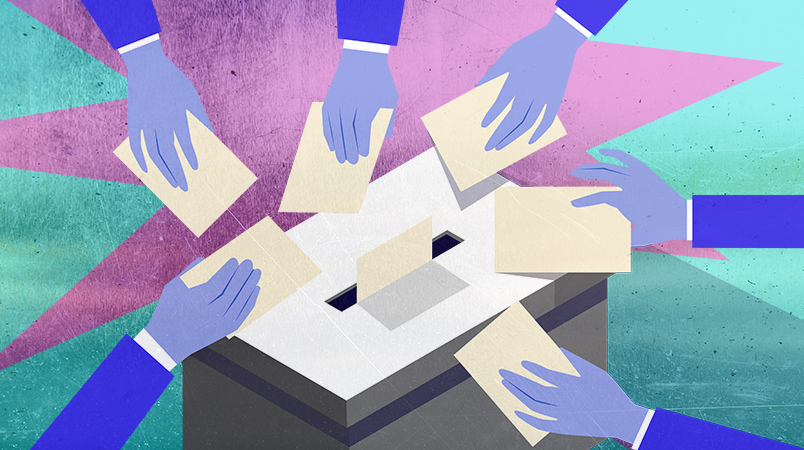As Republicans have played a rearguard defense in what turns out to be an egregious instance of election fraud in the 2018 congressional election in North Carolina’s 9th district, they’ve sometimes resorted to the curious claim that at least they’re vindicated. Contrary to Democrats’ claims, voter fraud really does happen! Even if it’s our candidates doing it. This is not only too clever by half. It is an intentional conflation. What Democrats and voting rights advocates say is that voter impersonation fraud is rare to the point of non-existence. Voter and election fraud is rare but not unknown. (The distinction is critical because voter ID laws, the top voter suppression method justified by claims of fraud, only has any relevance to voter impersonation fraud.) And that gets us to a critical lesson or rather a series of them from this incident in North Carolina.
Any expert on voting or voting and election fraud will tell you that when fraud does happen, it is overwhelmingly with absentee ballots. Overwhelmingly. There was a big case in Miami mayoral election 20 years ago.
I’m not here to beat up on the absentee ballot system, though it definitely needs some tightening up. But why this is the case explains some important principles about how to think about the whole issue of voting rights, voter fraud and election security.
If you or I really wanted to, we might be able to commit voter impersonation fraud. I could register a second time in another neighborhood, maybe with a slightly different version of my name, finding another address where someone wouldn’t see the mailings coming to someone who doesn’t live there. At the next election I’d go vote with that fraudulent registration after I voted my legitimate one. But why would I? It’s actually not that hard to get caught. The penalties are pretty stiff. And my one fraudulent vote is almost guaranteed never to change the result in any election I care about. I could do ten fraudulent registrations and votes. But that would dramatically increase my chances of getting caught while still almost guaranteeing that I wouldn’t accomplish anything.
If I’m really so hardcore about helping my candidates win, I can accomplish a lot more with zero legal risk by just doing legitimate campaign work. Quite simply, it doesn’t make sense even by the cynical standard, which is the biggest reason it’s so rare. But it points to a more general reality. Voter or election fraud only works if you can do it at scale. And to do it at scale you need to operate on the election administration side rather than the voting side of the equation. That’s the only way a relatively small number of people can potentially change an election outcome.
This is why real voter and election fraud became became so much rarer in the second half of the 20th century, as Rick Hasen helped me understand: reforms and increased safeguards in election administration that made fraud much more difficult. (Basically, don’t leave a single administrator in single party dominated areas alone with the ballots.)
Here we should note a corollary that applies to all criminal activity to a degree but is especially relevant to elections. The chances of getting caught are directly tied to the number of people involved – more people who can talk, more people who can screw up, more communications that can raise suspicion. Indeed, the chances of getting caught as you add more people likely rises not arithmetically but exponentially. Only on the administration side can you move big numbers with, potentially, small numbers of people.
Which brings us back to absentee ballots.
Absentee ballots are a curious wrinkle in the system, a sort of exception case version of early voting before our modern concept of early voting really become a thing. Critically, it provides a porous opening where partisans and bad actors can nudge their way over onto the administration side of the process, as the North Carolina example illustrates. McCrae Dowless’s crew broke the law at a number of different points. There’s also a big range in how absentee voting is regulated in different states – some more restrictive, more permissive. But it goes without saying that there is simply no mechanism by which his crew or any other GOTV operation could do anything remotely comparable with conventional voting. There’s just no good angle in.
In other words, the same dynamics that make voter impersonation fraud vanishingly rare and virtually always ineffectual make absentee ballot voting a logical place for fraudster to focus. (Let’s remember: absentee ballot fraud is more common but still very uncommon in general.) More broadly, there’s an important lesson here for voting rights. The dangers aren’t coming from individual voters. So virtually all the things that make voting harder don’t move the ball on election security. They just make it harder for people to vote.
This isn’t a big surprise. The entire anti-voter fraud movement is based on dishonesty and bad faith. It’s a voter suppression movement. Still, it’s political power rests on convincing people that their bad faith claims are valid. The North Carolina case provides a good illustration of why they are not.






